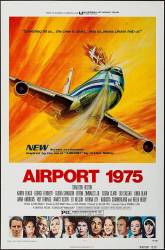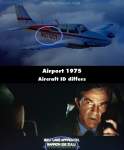Factual error: The scene in which the Beechcraft Baron hits the Boeing 747 in flight plumbs new depths in cinematic absurdity. Assuming both aircraft are at their normal cruising speeds - they appear to be - and the Beechcraft has half a fuel load left, it will hit with the same energy as 7,700 kgs of TNT. The Beechcraft Baron weighed 3,200 kg and the two aircraft would have a closing speed of something like 700 kmh. Even a glancing blow would tear the entire front half of the 747 to bits - there would be virtually nothing of the fuselage left intact all the way back to the wings, and the film shows the two aircraft on course for a head on collision.
Continuity mistake: In the interior shots the pilot is struggling and in the exterior shots he is flying calmly.
Suggested correction: This is much too vague. Which pilot? Which aircraft? What scene?
Continuity mistake: As Murdock is being lowered toward the 747 there's a shot with a POV looking at the Plane's nose from some distance. It's an FX shot, a traveling matte of the actor with a large piece of airplane against a blue screen. The foreground & background elements don't match very well. The distant landscape below is moving linearly in one direction and the aircraft is pointing in quite another.
Suggested correction: That's not necessarily a mistake because of wind drift albeit it's a little exaggerated.







Suggested correction: What matters is how much of the small plane's kinetic energy was deposited in the 747's structure. A glancing blow would deliver less energy than a head-on collision, because it lessens the total time interval of the impact. Another important thing is if the small plane shattered or stayed largely in one piece during the collision. If it promptly shredded on impact, then each little fragment carried away its portion of the total energy. Smaller pieces of something as light as that plane would immediately get caught in the powerful airflow and be diverted around the 747.
Absolute rubbish. Airliners do not survive mid air collisions.